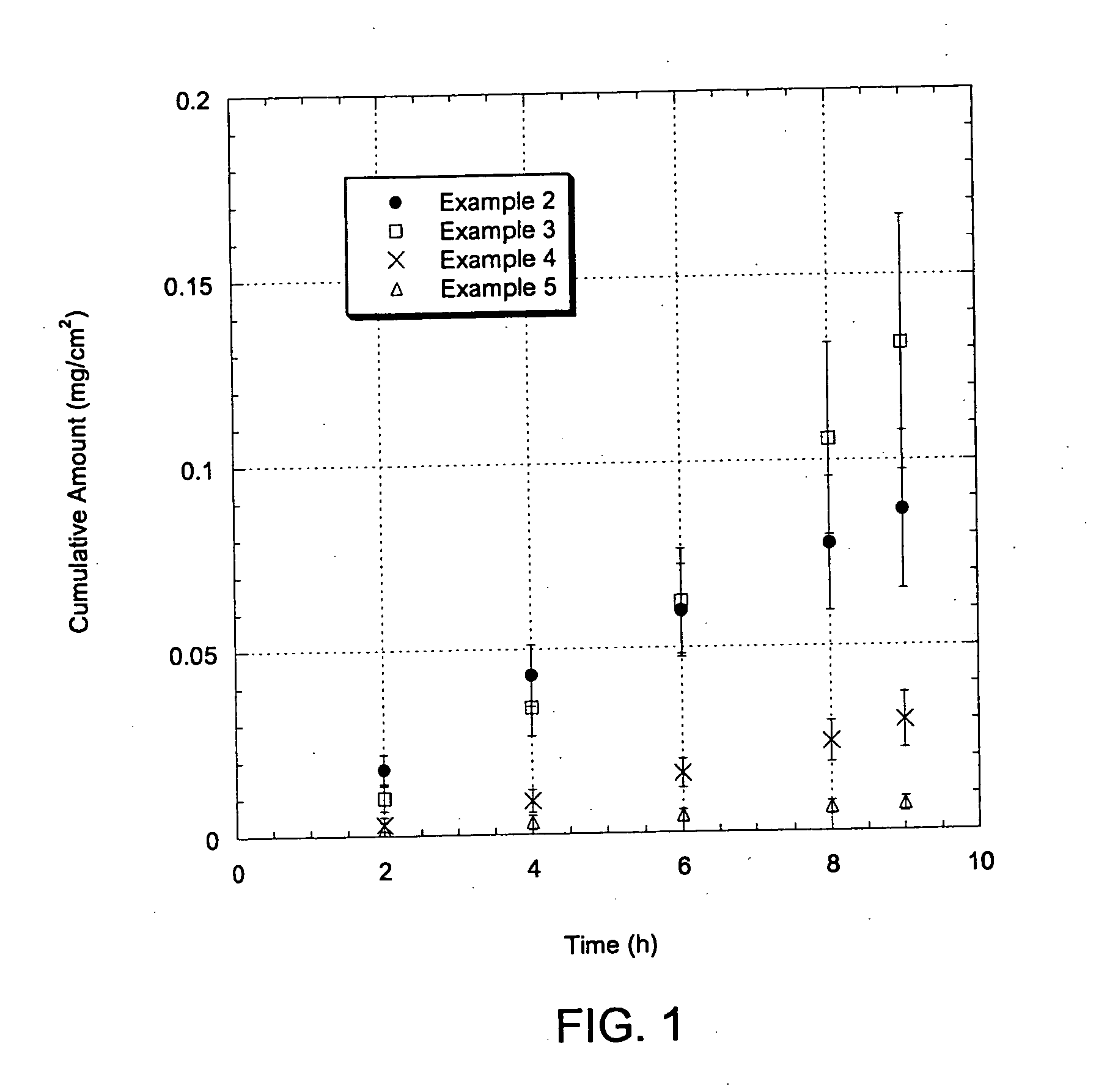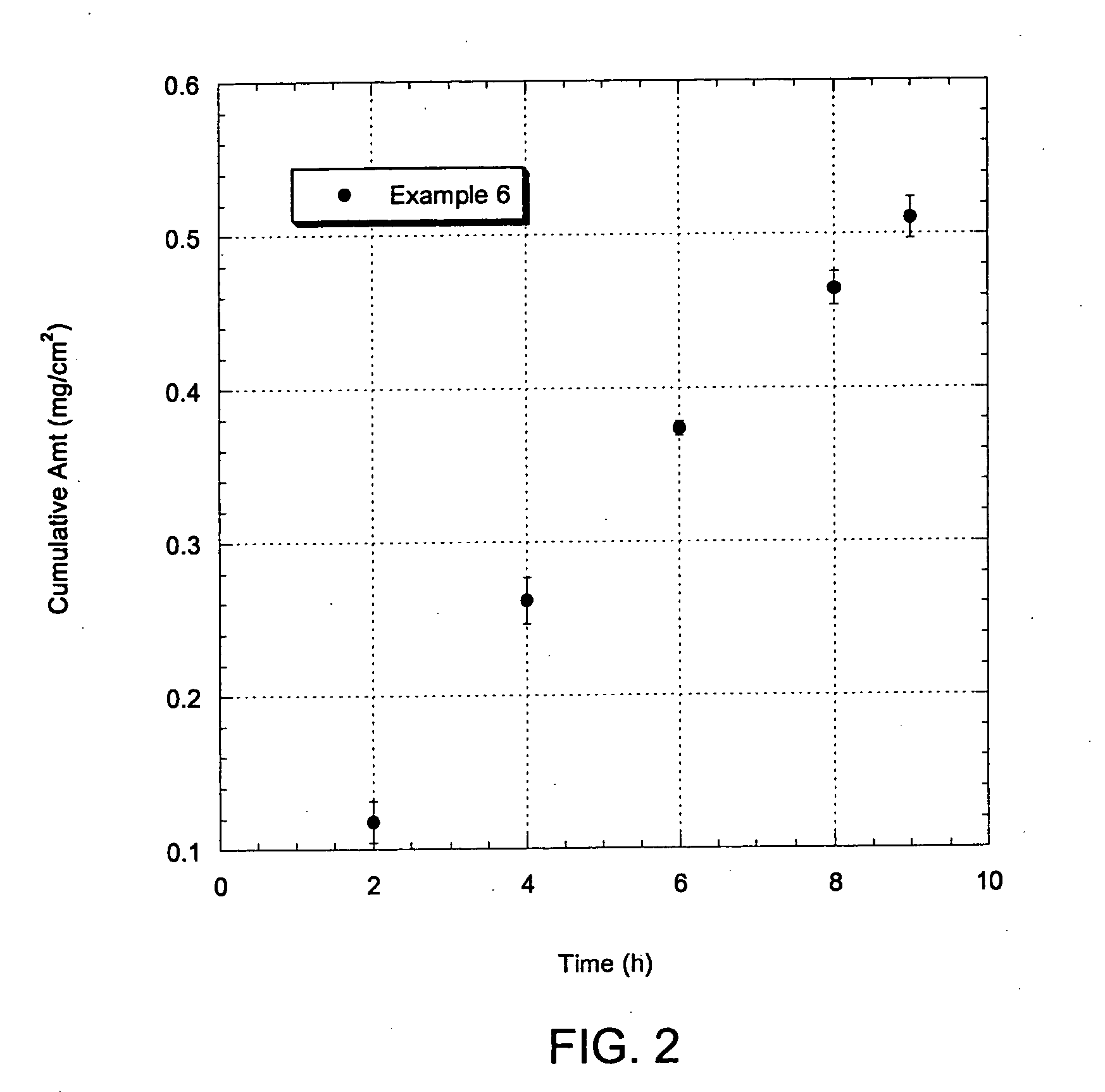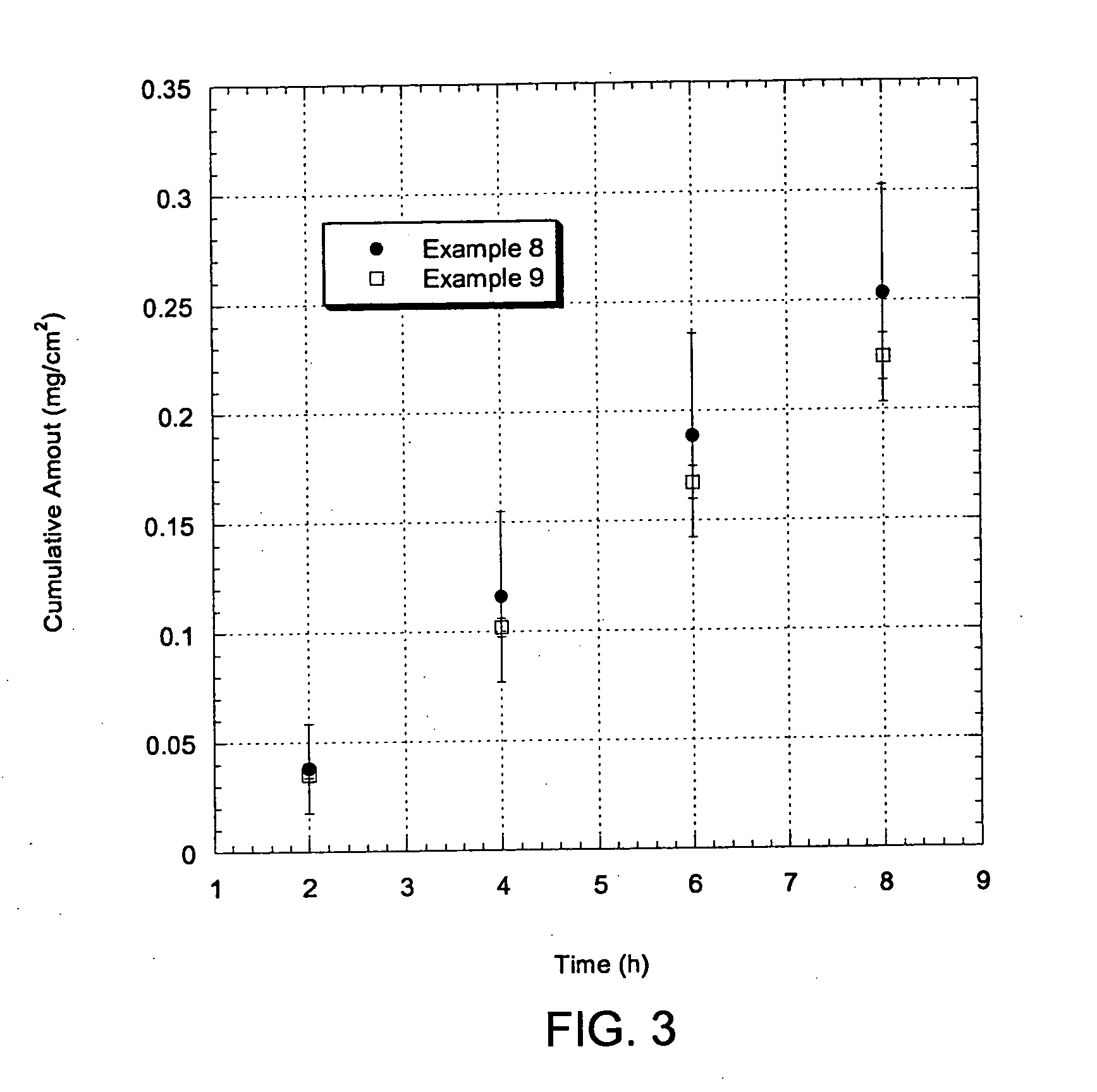Adhesive peel-forming formulations for dermal delivery of drugs and methods of using the same
- Summary
- Abstract
- Description
- Claims
- Application Information
AI Technical Summary
Benefits of technology
Problems solved by technology
Method used
Image
Examples
example 1
Skin Permeation Methodology
[0072] Hairless mouse skin (HMS) was used as the model membrane for the in vitro flux studies described in herein. Freshly separated epidermis removed from the abdomen of a hairless mouse was mounted carefully between the donor and receiver chambers of a Franz diffusion cell. The receiver chamber was filled with pH 7.4 phosphate buffered saline (PBS). The experiment was initiated by placing test formulations (of Examples 2-5) on the stratum corneum (SC) of the skin sample. Franz cells were placed in a heating block maintained at 37° C. and the HMS temperature was maintained at 35° C. At predetermined time intervals, 800 μL aliquots were withdrawn and replaced with fresh PBS solution. Skin flux (μg / cm2 / h) was determined from the steady-state slope of a plot of the cumulative amount of permeation versus time. It is to be noted that human cadaver skin was used as the model membrane for the in vitro flux studies described in Example 10. The mounting of the sk...
examples 2-5
Adhesive Peel-forming Formulations Including Ketoprofen and in Vitro Testing
[0073] A stretchable adhesive peelable formulation for transdermal delivery of ketoprofen (which is suitable for delivery via skin on joints and muscles) was prepared which includes saturated amount of ketoprofen in-an excipient mixture (more ketoprofen than that can be dissolved in the excipient mixture) to form an adhesive peelable formulation, some of which are prepared in accordance with embodiments of the present invention. The excipient mixture, which was a viscous and transparent fluid, was prepared using the ingredients as shown in Table 1.
TABLE 1Ketoprofen Peel-forming Formulation Components.ExamplesIngredients*2345PVA (polyvinyl alcohol)1222PEG-400 (polyethylene glycol)110.271.75PVP-K90 (polyvinyl pyrrolidone)1000Glycerol111.80.27Water2.65.35.45.4Ethanol3000Ketoprofen
*Ingredients are noted as parts by weight.
[0074] Each of the compositions of Examples 2-5 were studied for flux of ketoprofen, as...
example 6
Adhesive Peelable Formulation Including Lidocaine and in Vitro Testing
[0080] A stretchable adhesive peelable formulation for transdermal delivery of lidocaine was prepared which includes saturated amount of lidocaine in an excipient mixture to form an adhesive peelable formulation in accordance with embodiments of the present invention. The peel formulation was prepared from the ingredients as shown in Table 3.
TABLE 3Lidocaine Peel-forming Formulation Components.ExampleIngredients*6PVA1Eudgragit E-100**1PVP-K900.5Glycerol0.75PEG-4000.75Water2Ethanol2Lidocaine
*Ingredients are noted as parts by weight.
**from Rohm & Haas.
[0081]
TABLE 4Steady-state Flux of Lidocaine through Hairless Mouse Skin fromVarious Adhesive Peel-forming Formulations at 35° C.Average fluxFormulationmcg / cm2 / h*Example 647 ± 3
The quantity of lidocaine that permeated across the hairless mouse skin stratum corneum over time is shown in FIG. 2.
[0082] The adhesive peelable formulation of lidocaine formulation in th...
PUM
| Property | Measurement | Unit |
|---|---|---|
| Fraction | aaaaa | aaaaa |
| Time | aaaaa | aaaaa |
| Time | aaaaa | aaaaa |
Abstract
Description
Claims
Application Information
 Login to View More
Login to View More - R&D
- Intellectual Property
- Life Sciences
- Materials
- Tech Scout
- Unparalleled Data Quality
- Higher Quality Content
- 60% Fewer Hallucinations
Browse by: Latest US Patents, China's latest patents, Technical Efficacy Thesaurus, Application Domain, Technology Topic, Popular Technical Reports.
© 2025 PatSnap. All rights reserved.Legal|Privacy policy|Modern Slavery Act Transparency Statement|Sitemap|About US| Contact US: help@patsnap.com



